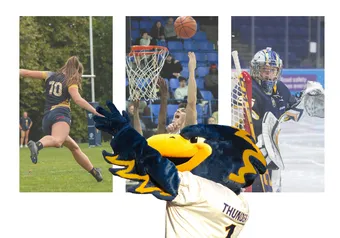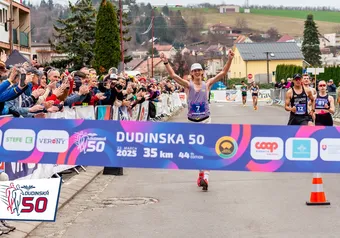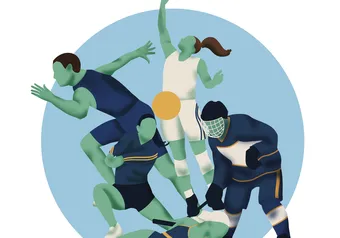Two weekends ago, the UBC Thunderbirds track team hosted its annual UBC Open — their first multi-university meet at home this season. With teams travelling from across the country to attend, it was a good chance for the ’Birds to test their skills against some of the nation’s best athletes.
With 45 per cent of UBC’s current track and field roster in their first year of university, the UBC Open was also a chance for several of the new recruits to get up to varsity speed. They had the home field advantage to settle the nerves.
“I think that our [April 1 weekend] meet offers an excellent level of competition for those athletes who have transitioned from high school,” said head coach Laurier Primeau in an email. “The number of entries is relatively low, and while we want athletes to compete hard, there is also a fairly relaxed atmosphere at the UBC Open, which I think eases anxiety.”
The meet also allows the team some well-deserved time on the track they know best. Though evidently they train here at UBC, most of the team’s meets are south of the border in Washington and Oregon.
“We don’t compete at home often, and I think there’s something to be said for being able to wake up in your own bed rather than deal with travel fatigue,” said Primeau. “We also had a number of people come out to watch us and I think that gave some of our team members an emotional boost. It was really cool to see classmates without a sport background take an interest in members of our team.”
“It’s not lost on us that people without the context of an athletic lifestyle must think we’re pretty peculiar for spending 15 to 20 hours per week trying to walk and run faster, throw further and jump higher,” he continued.
In all, the weekend was quite the success for the ’Birds, as several UBC athletes made NAIA ‘A’ standard to qualify for the track and field championships automatically. Among the veteran competitors — such as Sandra Kilmartin, Jesse Hooton and Nicole Lacis, who all made the ‘A’ standard — rookie javelin throwers Roan Allen (with a 57.33 metre throw) and Isaac Sandri (at 57.41 metres) also made their mark and claimed a place at the championship event.
“Going into that meet I just wanted to hit 57 metres and get standard over with and not have to worry about it so much, kind of take some more pressure off and try to focus on individual goals more now,” Allen said.
“Standards over with, now I can try to step back and work on different things instead of focusing on competitions, and get ready for the bigger competitions and try to hit some more personal goals as well.”
Among those in the ‘B’ standard include second-year Olivia Campbell for long jump, and veteran Tanyaradzwa Motsi for the 110m hurdles.
According to the NAIA website, the ‘A’ and ‘B’ are the individual qualifying standards “as set by the Standards Committee of the NAIA-TFCA.” The standards vary from indoor to outdoor events.
The important thing to note for ‘A’ standards is that if you make that time, distance or height — or do better than that — you are in for a trip to the championships.
‘B’ standard athletes are those who just missed that top qualifying standard, but who the coach nominates to compete should they make the secondary suggested standard. A team can select three men and three women from their roster – who have set ‘B’ standard times at past events — to fill those spots at championships.
For example, if you make a time of 48.30 seconds in the men’s outdoor 400 metre run, you’ve made the ‘A’ standard and have qualified for the championships. If you make a time between 48.30 seconds and 48.50 seconds, and you’ve made the ‘B’ standard. Your coach can pick you to go to be one of three men to go to the championships alongside your ‘A’ standard athletes.
These standards must be achieved before the championship’s individual-event athlete deadline of May 18. If you are a multi-event athlete, that timeframe slims down a bit to May 15.
With this in mind, UBC is off to a good start in getting a significant turnout at the NAIA championships in Gulf Shores, Alabama, at the end of May. The UBC Open was just one more positive display for the team, as they continue through the second half of their season.
“I saw some things that we could do better on the technical side,” Primeau concluded on the UBC Open. “But I really believe that we are trending in the right direction and that warmer weather and stronger competitive fields later in the season will take [off] performance improvements.”
“I think in May it’ll definitely start to pick up. California and Alabama will probably be pretty intense,” Allen said of the coming meets. “You are just trying to hit placings [within your event] there as opposed to standards.”
Share this article
First online





